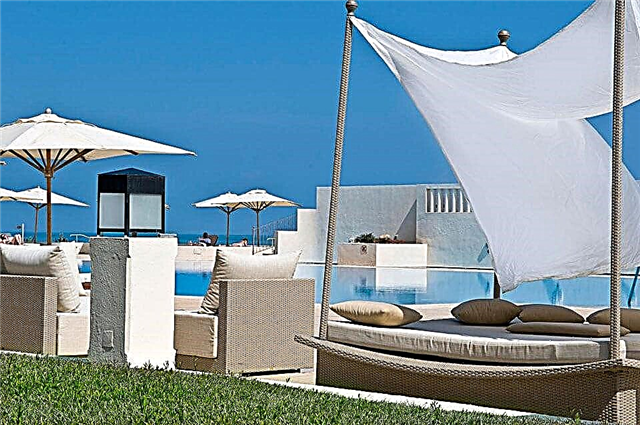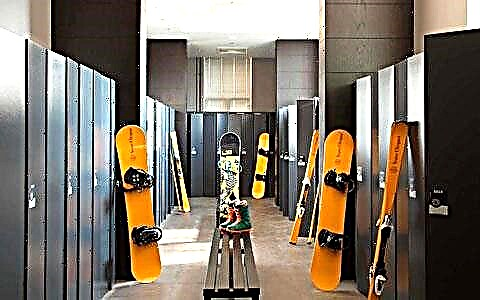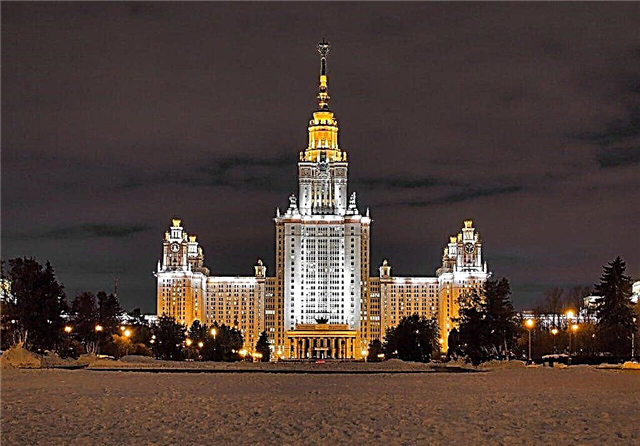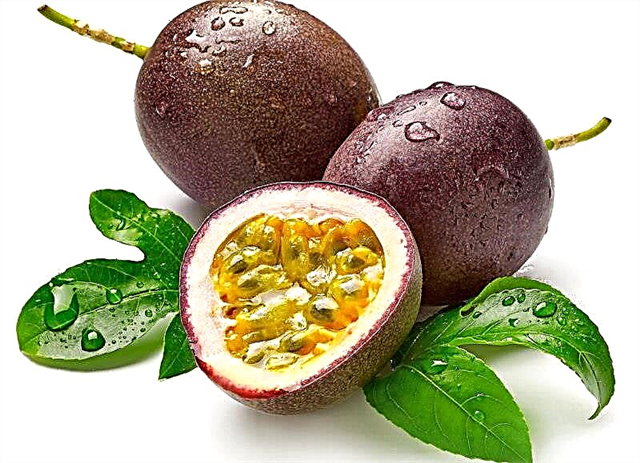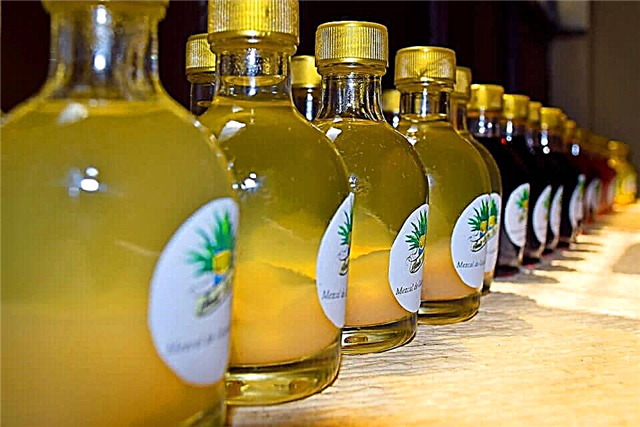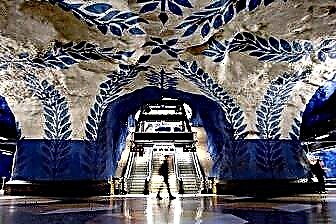Stockholm is called “the gem on the map of Northern Europe” and the capital of Scandinavia. The city stands on 14 islands that separate the waters of the Baltic Sea and Lake Mälaren. It is home to the fairytale characters Astrid Lindgren and the great European scientists. Locals joke that their city is half water and half green. Indeed, Stockholm is a very clean and green city, with a convenient transport system and comfortable living conditions.
The architectural styles of Northern Europe are revealed in all their glory in the Swedish capital. The cobbled streets of Gamla Stan are built up with picturesque old houses, monuments to famous kings flaunt in the city squares, and outstanding collections of works of art are collected in numerous museums.

The best hotels and hotels at affordable prices.
from 500 rubles / day
What to see and where to go in Stockholm?
The most interesting and beautiful places for walking. Photos and a short description.
Old Town - Gamla Stan
The historic center of Stockholm on the Stadsholmen island. The first fortress was built here in the 13th century, which gave rise to the Swedish capital. Most of the buildings and sights of Gamla Stan belong to the 16th-17th centuries, in some places buildings of the 15th century have survived. The relatively small area of the Old Town is home to several thousand inhabitants.

Vasa Museum Ship
A 17th century warship built by order of the ruler Gustav Adolf II. The ship was built by 400 people over 2 years, the result was one of the largest ships in Europe. But he was not destined to set sail - when leaving the harbor, the ship fell on its side and sank. Until 1961, "Vasa" lay at the bottom. After the ship was raised from the water and restored, it was decided to open a museum of the history of the ship. The exposition was launched in 1990.

Boy looking at the moon
Iron boy statue in Old Stockholm. The size of the monument does not exceed 15 cm, so it can be difficult to find it in winter. The author of the composition is Liss Eriksson. In the figure of a boy, he reflected memories from his childhood: long sleepless nights, during which he looked at the moon. Locals call the statue "Olle"; they constantly sew little hats, scarves and capes for the boy.

Royal Palace
The current residence of the Swedish royal family. The building was erected in the middle of the 18th century on the site of the burned-down Three Crowns castle. The palace was built in the Baroque architectural style according to the project of N. Tessin; the preserved medieval buildings are hidden behind the baroque facades. Inside are relics of famous Swedish monarchs and works of art. The building has seven floors and over 1000 rooms.

Stockholm City Hall
The building of the city administration of the early XX century, located on the island of Kungsholm. The Town Hall was designed by Ragnar Östberg and took several million red bricks to build. You can get inside only as part of an excursion. Stockholm City Hall is known for hosting the annual Nobel Prize reception in its grand hall.

Drottningholm
A baroque palace and park complex on the shores of the picturesque Lake Mälaren. Despite the fact that the palace is the current summer residence of the royal family, it is open to the public. On the territory of the palace park, there is a Chinese garden and the Royal Theater. Drottningholm was built at the end of the 17th century on the site of the castle of Queen Catherine Jagiellonka.

Riksdag building
The Swedish Parliament building on Helgeandsholmen Island in central Stockholm. The palace was built at the beginning of the 20th century in the neoclassical style with neo-baroque elements. Architect A. Johansson worked on the project. Parliament sits in a special room open to the public. In one of the parts of the Riksdag there is a gallery, where about 4 thousand paintings, sculptures and other works of art are exhibited.

Stortoriet square
The oldest square in the historical district, Gamla Stan, is located at the highest point of the island of Stadsholmen. In the Middle Ages, Stortorget was called "Stortorget", that is, "large area". Trade fairs and important social gatherings were held here. Around the square there are houses and old streets with "professional" names: Kupecheskaya Street, Monasheskaya Street, Sapozhnikov Street and others.

Drottninggatan street
Stockholm's main pedestrian street, with the largest concentration of shops, restaurants, souvenir shops and places exclusively geared towards tourists. Drottninggatan stretches for 1 km. between Wasastaden and Gamla Stan districts. A visit to this place is listed as a must in all tourist programs. On Drottninggatan Street, you can meet a considerable number of Stockholm freaks.

Royal Opera
The main Swedish theater of opera and ballet. The modern building was built at the end of the 19th - beginning of the 20th century according to the project of A. Anderberg. In the old theater building, King Gustav III was killed, so the opera was closed for several years after his death. As a result, it was decided to demolish it in 1892 and build a new building in the neoclassical style. The main hall of the opera is designed for 1200 seats, the interior is decorated with a grand staircase made of marble and a foyer with gilded paintings.

National Museum of Sweden
An art gallery in the center of Stockholm on Blasicholmen Island. The exposition was founded at the end of the 18th century under the monarch Gustav III, who was a great patron of art. The modern building of the museum appeared in 1866. The museum funds contain about half a million exhibits: paintings, sculptures, art objects of contemporary art. There is also an art library on site.

Stockholm City Museum
The museum exposition acquaints visitors with the history of the Swedish capital. Here are presented a fairly diverse collection, covering a period of several centuries: medieval art, history of religion, numismatic collections, painting, applied art, urban household items, photographs of the early 20th century and much more. In special thematic rooms, the life of the townspeople of the 15th-16th centuries was reconstructed.

Nobel Museum
Museum dedicated to the outstanding Swedish scientist Alfred Bernhard Nobel. In honor of him, the famous Nobel Prize was established, which is awarded for outstanding achievements in various fields of science. In 2001, in honor of the centenary of the foundation of the prize, the Nobel Museum was opened. The exposition is located in the building of the Stock Exchange in the Old City. The museum constantly hosts scientific debates and educational exhibitions.

Modern Art Museum
Each European capital considers it its duty to have its own contemporary art museum. The Stockholm authorities did not stand out and organized in the middle of the 20th century one of the most complete and extensive collections of modern art objects. The museum exhibits about 100 thousand exhibits. Among them are the "classical representatives" Pablo Picasso, Kazimir Malevich, Henri Matisse, Giorgio de Chirico.

Tom Titus Experiment Museum
Science Museum, which houses several hundred experimental models. Here you can disassemble and assemble models of cars, engineering structures, various devices, or set up your own experiments.Children in the Tom Titus Museum are allowed almost everything - to crawl in all places, break models, launch their inventions, that is, engage in active knowledge of the world around them.
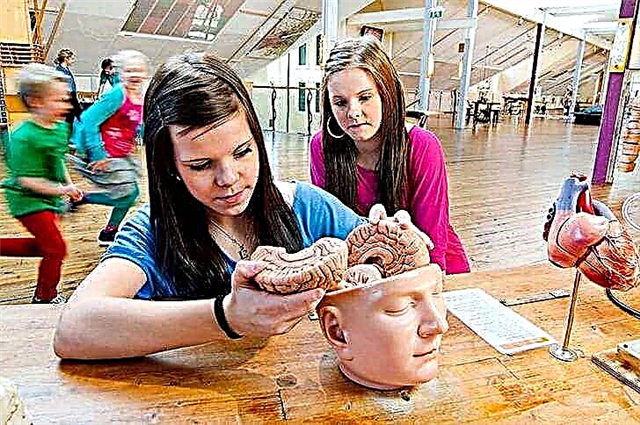
Skansen
An open-air exhibition showing Sweden in miniature. The territory houses several dozen houses, estates and mansions of different eras, brought from all over the country. There is also a city quarter showing the inhabitants of the city of the XVIII-XX centuries and a peasant farm. Numerous artisan workshops tell visitors about the secrets of glass making, book printing and tableware making.

Junibacken
Museum on the island of Djurgården, dedicated to the work of the writer Astrid Lindgren (creator of the beloved character "Carlson") and other Swedish children's writers. Numerous heroes of fairy tales live on the territory of the museum: mummies-trolls, knights, dragons, fabulous animals. Here children go on an exciting journey through the fairyland by train, play funny games with Pippi Longstocking and walk around the paradise country of Nangiyala.

ABBA Museum
ABBA is a popular Swedish disco band from the 70s and 80s. Many singles of the famous "four" went platinum and still remain relevant. A museum dedicated to the group's work was created in 2013 with the active participation of the soloists themselves. It features several interactive exhibits, a collection of the band's concert costumes, musical equipment, awards and archival documents.

Church of St. Nicholas
The temple was founded by the founder of Stockholm, Jarl Birger Magnusson in the 13th century. Construction continued until the beginning of the 18th century. Until 1873, the coronation of Swedish monarchs took place in the Church of St. Nicholas, and the wedding ceremony of crowned persons is still held. In the 16th century, after the victory of the Reformation in Sweden, the temple was transferred to the Lutheran Church. St. Nicholas Church is the cathedral in Stockholm.

Church of Saint Clare
Lutheran Church in the central Norrmalm area. The first building appeared in the 13th century at the nunnery of the Order of St. Clara. Since then, it has been rebuilt several times. The monastery was demolished in the 16th century by order of King Gustav Vasa. The building of the church, erected in the 16th century and overhauled in the 19th century, has survived to this day. Famous Swedish poets are buried in the church cemetery.

German church
Former building of the German Trade Guild. In the 16th century, it was rebuilt and adapted into a temple. A team of architects worked on the project, which included Hubert de Bechet and Willem Boy. The need to have a German church in Stockholm arose due to the fact that a large number of German craftsmen and merchants lived in the city. The new church was able to meet the spiritual needs of the foreign flock.

Riddarholmen Church
Royal Church on the island of Riddarholmen, located near the royal residence. In addition to members of the ruling family, ordinary parishioners could freely visit the temple. Until the middle of the 20th century, Swedish rulers were buried in church crypts. The tombs of the kings are valuable historical monuments. Today, only funeral and memorial masses are held in the temple.

Skugschürkogarden forest cemetery
The burial is located in the south of Stockholm among a pine forest. A whole team of architects and designers worked on the decoration of the cemetery, so it has become a fairly popular attraction among tourists. Famous Swedish citizens who played an important role in the cultural life of the country are buried here. Skugschürkogarden is a quiet and romantic place, completely devoid of a gloomy atmosphere.

Katarina's elevator
Passenger lift, Södermalm area. The elevator takes you to the observation deck for a breathtaking view of Stockholm. The first lift was created at the end of the 19th century, in 1915 and 1935. major renovations were carried out, as a result of which the steam engine was replaced and the strength and reliability of the entire structure were improved.

Kaknes TV Tower
One of the tallest TV towers in Northern Europe. The structure is 155 meters high (170 meters if you count the antenna). The panoramic observation deck is located at an altitude of 128 meters. There is also a tourist information center, a gift shop and a restaurant on site. The tower was built in 1967 and has since become the largest radio and television broadcasting center in Stockholm.

Globe Arena
Stockholm sports stadium, designed in a modern and original manner. The diameter of the spherical structure is 110 meters, the height is 85 meters. The arena accommodates about 16 thousand spectators (about 14 thousand during hockey matches). Since 2009, the site has been owned by the Swedish telecommunications concern Ericsson. The structure was built by 1988, the work lasted only 2.5 years.

Kulturhuset
Modern exhibition hall, an example of Stockholm architecture of the 60s. in the art nouveau style. Here is the Stockholm City Theater, reading rooms for children and adolescents. On the territory of Kulturhuset, exhibitions, master classes are regularly held, as well as discussion clubs and creative evenings are organized. An interesting event takes place almost every evening.

Stockholm metro
Stockholm Metro consists of 100 stations, which are located on three lines. Some central stations are decorated in an original way, so they are of interest to guests of the city. For example, the vaults of Art. "T-Central" are fancifully painted with ornaments of leaves and branches, Art. "University" carved out in a stone cave, in the design of Art. "Tekniska hyogskulan" is dominated by scientific themes and illustrations of the laws of nature.

Gröna Lund Amusement Park
The first rides in the future capital's amusement park were installed more than 130 years ago at the expense of the entrepreneur Jacob Schultheis. In addition to various merry-go-rounds and roller coasters, Grön Lund has attractions such as a haunted house, a Viking ship, and a staggering fun house. The park often hosts rock concerts, festivals and performances.

Kungstradgarden Park
Stockholm City Park, founded on the site of a medieval royal vegetable garden. It is believed that in the past, vegetables were grown here for the royal family's table. Gradually, the area expanded, trees were planted in the garden, and gradually it turned into a place for walking and rest. The park has statues of Swedish kings and fountains decorated with characters from Scandinavian mythology.


